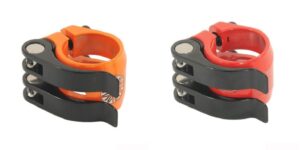
Warehouses are critical to fulfillment and distribution centers, but make no mistake about it, they consume a massive quantity of energy every year.
Some of this is necessary; warehouses must be well-lit, many warehouses must be closely temperature-controlled, and workers may need to use electronic equipment to retrieve, track and manage inventory.
But in some instances, some of the total energy consumption is also wasted energy. Let’s take a look at some ways you may be able to conserve energy in your warehouse, thereby cutting costs and improving overall efficiency.
Install Destratification Fans
In the winter, especially, a lot of energy gets wasted heating warehouses.
This occurs because, even if the HVAC system is adequate for the space and well-tuned, so much heat escapes to the warehouse ceiling, leaving the floor and working areas cold.
There may be an easy way to rectify this problem, though, and it doesn’t require you to make any changes to your HVAC infrastructure.
Consult a provider of HVLS, or high-volume low-speed fans, which help recirculate the air and prevent it from accumulating near the ceiling.
Upgrade Your Doors
Industrial, insulated doors aren’t just for the freezer; when installed at entry and exit points to your warehouse, they can help prevent shifts in temperature that are expensive and energy-inefficient.
Work with a provider of energy audits to assess your current infrastructure and see if any changes are necessary to the doors in your facility.
Where Possible, Adopt Energy Efficient Scheduling
For warehouses in hot areas, consider starting shifts later in the day during the summer to leverage the day’s natural cycle.
Having employees start work later in the day and work into the night when it is cooler may help prevent you from needing to run the AC system at peak capacity during the hottest hours of the day.
Inspect and If Necessary Replace Dock Seals and Weather-Stripping
When’s the last time you checked the dock seals or the weather strips around your dock doors?
Last month? Last year? Never?
Loading docks in warehouses are a prime source of insulative failure. They let cool, air-conditioned air escape in the summer, and they let hot air out in the winter.
If the weather stripping around your dock doors is degraded, torn, or otherwise damaged, have a professional remove it and install new weather stripping as soon as possible.
This is a surprisingly affordable way to help control energy consumption in warehouses, but it comes with a caveat. You have to be conscientious about making sure truck drivers use them properly.
If a trailer isn’t docked properly, it doesn’t matter how high-tech your dock seals are. They won’t work.
Upgrade to High-Bay LED Lights
For warehouses that have high-bay fixtures installed, replacing your existing lighting with LEDs can have big benefits.
Modern high-bay LED lights offer similar luminous performance to HIDs, if not better, and consume far less energy in the process – as much as 40%-50% less.
In addition, high-bay LEDs produce less heat as a byproduct. That will help to keep your warehouse cooler in the summer.
Moreover, LEDs are much longer lasting than HID lights and contain no harmful toxins, like mercury. This makes LEDs more environmentally friendly and also easier to dispose of at the end of their life cycles.
Evidently, a well-lit workspace also improves employee productivity – so upgrading to superior lighting might have other benefits for your operation as well.
Put Electronics and Equipment into Energy-Saving Mode (or Power Down) When Not in Use
Leaving machines powered-up or running, such as picking equipment, conveyor belts, or even just computers, when they’re not in use, is a big waste of energy.
If possible, switch these electronics into energy-saving mode; if not possible, power them down when not in use.
Also, coach your employees to observe these best practices for energy conservation; remember, every little bit counts.


